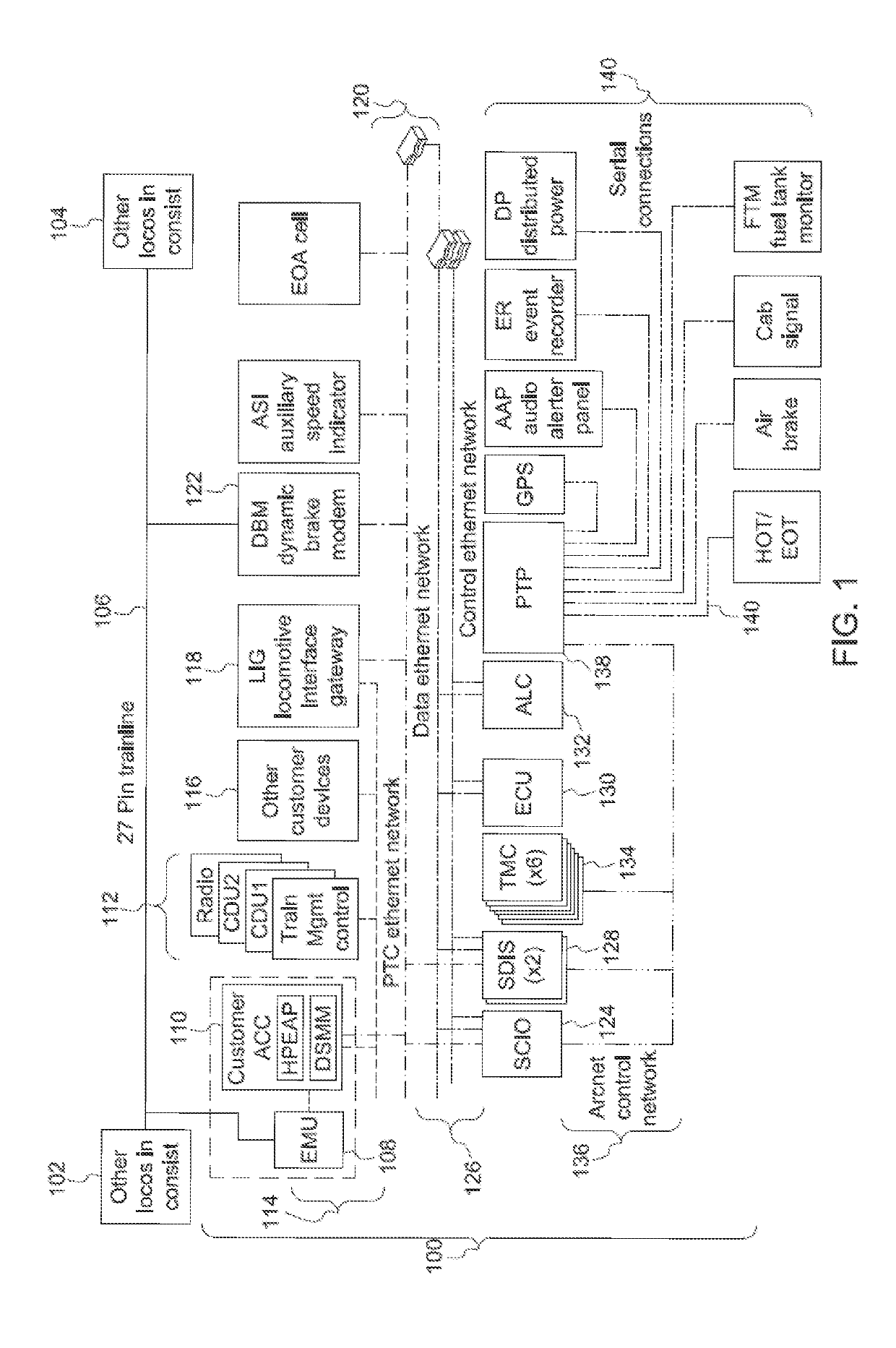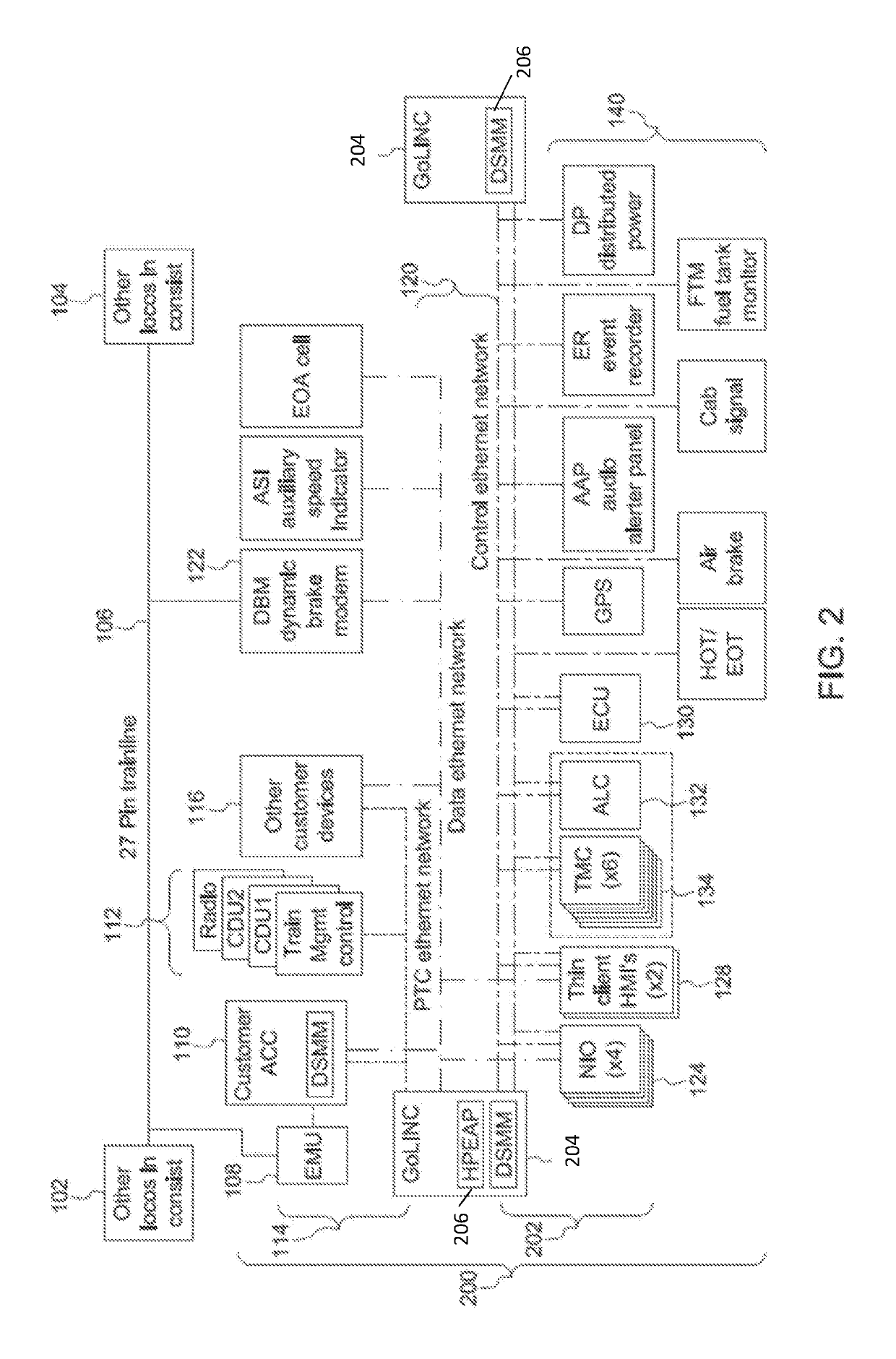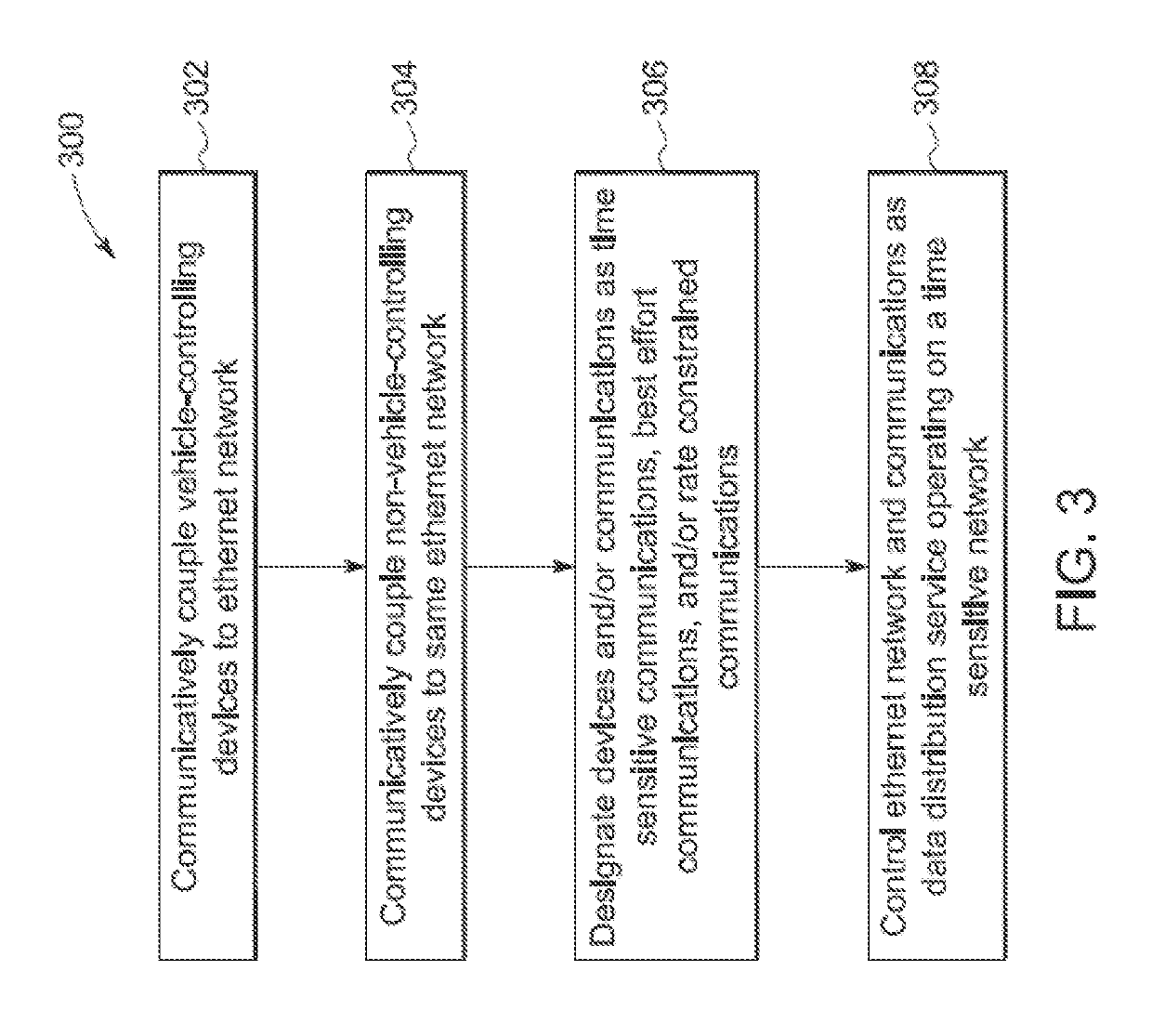Locomotive control system
a technology for locomotives and control systems, applied in the direction of railway signalling, railway signalling, signalling indicators on vehicles, etc., can solve the problems of unnecessari complexity of the control system of some vehicles, unfavorable communication between components, and many different communication networks within the vehicl
- Summary
- Abstract
- Description
- Claims
- Application Information
AI Technical Summary
Benefits of technology
Problems solved by technology
Method used
Image
Examples
Embodiment Construction
[0052]FIG. 1 illustrates one example of a vehicle control system 100. The vehicle control system 100 may be disposed onboard one or more vehicles of a vehicle system. For example, the control system 100 may be disposed onboard a locomotive of a rail vehicle system formed from the locomotive and one or more other locomotives 102, 104. The locomotives in the vehicle system are communicatively coupled by a wired connection 106, such as a 27-pin trainline cable. Other control systems identical or similar to the control system 100 shown in FIG. 1 may be disposed onboard the other locomotives 102, 104, with the various control systems 100 communicatively coupled (e.g., able to communicate with each other) via the wired connection 106. While the control system 100 is shown as being disposed onboard a locomotive of a rail vehicle system, alternatively, the control system 100 may be disposed onboard another type of vehicle. For example, the control system 100 may be disposed onboard an autom...
PUM
 Login to View More
Login to View More Abstract
Description
Claims
Application Information
 Login to View More
Login to View More - R&D
- Intellectual Property
- Life Sciences
- Materials
- Tech Scout
- Unparalleled Data Quality
- Higher Quality Content
- 60% Fewer Hallucinations
Browse by: Latest US Patents, China's latest patents, Technical Efficacy Thesaurus, Application Domain, Technology Topic, Popular Technical Reports.
© 2025 PatSnap. All rights reserved.Legal|Privacy policy|Modern Slavery Act Transparency Statement|Sitemap|About US| Contact US: help@patsnap.com



